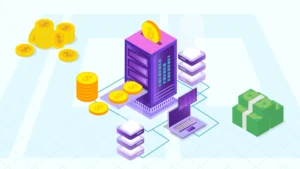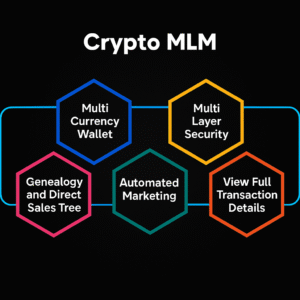
The world of digital assets is constantly evolving, and one of the most innovative fundraising mechanisms in recent years has been token listings on crypto exchanges. Unlike traditional fundraising routes such as IPOs or venture capital, token listings enable projects to directly access a global investor base, reduce dependency on intermediaries, and accelerate capital inflows. This method has become a powerful business strategy for blockchain startups, DeFi projects, and even established organizations seeking to diversify funding sources.
In this blog, we’ll analyze how token listings on exchanges fuel fundraising, examine the technical infrastructure that makes it possible, and explore strategies businesses can adopt to maximize results.
The Business Case for Token Listings
Token listings transform how companies approach financing. Instead of equity dilution, businesses tokenize their ecosystem—whether through utility tokens, governance tokens, or asset-backed tokens—and sell them to investors. This not only raises funds but also creates a community of stakeholders who are financially and emotionally invested in the project’s growth.
Unlike traditional financial markets, crypto exchanges provide borderless access. A project in Asia can list tokens and attract investors from Europe, North America, or Africa without the restrictions of conventional financial institutions. This global accessibility dramatically expands fundraising potential.
How Exchanges Enable Capital Formation
Crypto exchanges play a pivotal role in connecting projects with investors. The exchange infrastructure handles order matching, liquidity management, compliance, and settlement—making it possible for token issuers to focus on growth while investors enjoy a seamless trading experience.
Liquidity is the key. Without strong liquidity pools and transparent price discovery, tokens would struggle to gain traction. Exchanges act as liquidity hubs, ensuring buy and sell orders are executed efficiently. They also provide secondary markets, giving investors confidence that they can exit positions when needed.
Centralized vs. Decentralized Pathways
Projects raising funds must choose between centralized and decentralized exchange environments.
-
Centralized Exchanges (CEXs):
Offer faster onboarding, institutional-grade security, and high liquidity. However, they often involve strict listing requirements and regulatory oversight.
-
Decentralized Exchanges (DEXs):
Provide greater flexibility, reduced entry barriers, and self-custody for investors. The trade-off is often lower liquidity and less formalized compliance structures.
Balancing these two models has become a common strategy. Many projects initially list on centralized platforms to establish credibility and liquidity, and later expand into decentralized ecosystems to capture broader user bases.
Business Strategy: Positioning Tokens for Success
For a token listing to truly succeed as a fundraising method, businesses must align technology, marketing, and compliance strategies. Key considerations include:
-
Tokenomics Design:
The economic model must incentivize both investors and end-users. Poorly designed tokenomics can collapse demand, while strong structures encourage long-term holding and ecosystem participation.
-
Exchange Selection:
Different exchanges have varying audiences, liquidity levels, and regulatory frameworks. Choosing the right exchange can determine the scale of fundraising.
-
Liquidity Partnerships:
Collaborating with liquidity providers and market makers ensures price stability during initial trading phases. This step prevents volatility from undermining investor trust.
-
Regulatory Navigation:
Token listings must comply with securities laws, KYC/AML standards, and evolving global regulations. A compliant listing attracts institutional investors and builds long-term sustainability.
The Role of Infrastructure in Token Fundraising
Token fundraising requires robust exchange infrastructure. Technologies that streamline trading, settlement, and liquidity provision are now at the center of business strategies. For example, projects that utilize advanced crypto exchange solutions gain access to modular frameworks that can handle high-volume transactions, integrate compliance modules, and offer customizable trading features. This technical backbone enhances the trust of both institutional and retail investors.
Similarly, the expansion of a decentralized crypto trading platform has created new pathways for token listings. By using self-executing smart contracts, these platforms remove centralized control while still enabling efficient fundraising. Businesses benefit from lower barriers to entry and more direct engagement with their investor communities.
Diversifying Fundraising Channels
A token listing is not limited to traditional spot trading. Businesses now leverage multiple exchange models to maximize capital inflow.
-
Initial Exchange Offerings (IEOs):
Conducted directly on centralized platforms, providing instant access to liquidity and marketing support.
-
Decentralized Launchpads:
Enable projects to raise funds while engaging communities through governance and staking models.
-
Hybrid Approaches:
Combine centralized credibility with decentralized accessibility for balanced growth.
In these models, innovative tools like a crypto P2P exchange application enable direct buyer-seller interactions, reducing reliance on intermediaries while still creating liquidity opportunities. Similarly, the emergence of automated market maker solutions supports continuous trading, giving tokens consistent exposure and improving investor confidence.
Investor Confidence and Secondary Market Dynamics
Fundraising does not end at the initial listing. Secondary market activity is just as critical, as it validates investor confidence and sustains token value. Businesses must engage with their communities through transparent updates, strategic partnerships, and consistent ecosystem growth.
Exchanges contribute by maintaining transparent order books, reducing manipulation, and ensuring compliance. When investors see fair pricing and robust liquidity, they are more likely to participate in future fundraising rounds.
Real-World Applications
Token listings as a fundraising method are already being adopted across industries:
-
DeFi Protocols:
Launch tokens to fund ecosystem development while incentivizing liquidity providers.
-
Gaming Projects:
Issue utility tokens for in-game economies, raising capital while building active user bases.
-
Infrastructure Companies:
Tokenize services such as cloud storage, bandwidth, or computing power, offering investors direct exposure to infrastructure growth.
These use cases demonstrate how token listings are not just about capital—they are about creating long-term, scalable business ecosystems.
Conclusion
Fundraising through token listings on crypto exchanges has matured into a sophisticated business strategy. By leveraging the technical robustness of advanced crypto exchange solutions, engaging communities via a decentralized crypto trading platform, enabling seamless interactions through a crypto P2P exchange application, and sustaining liquidity with automated market maker solutions, businesses can unlock powerful pathways to capital.
The future of token-based fundraising lies in hybrid approaches that combine compliance, liquidity, and decentralization. For businesses willing to innovate and adapt, crypto exchanges are no longer just trading venues—they are strategic fundraising partners driving the next wave of digital finance.







